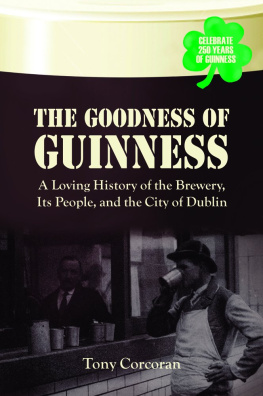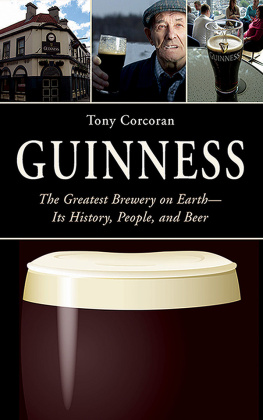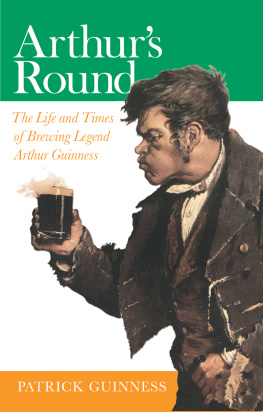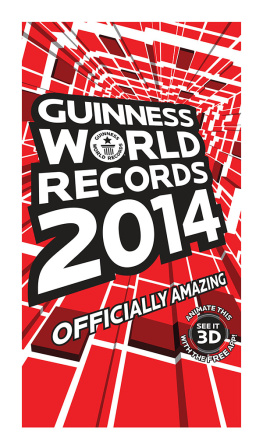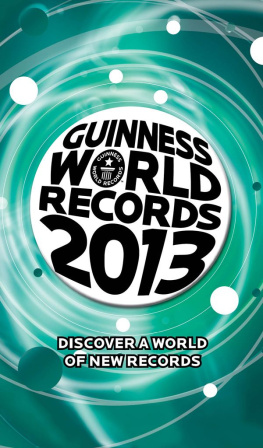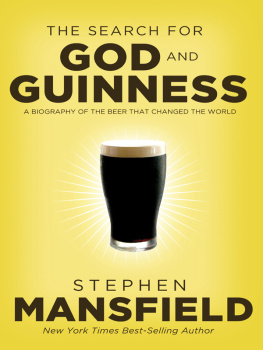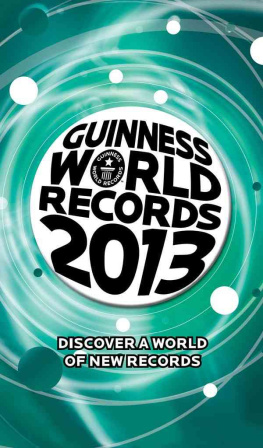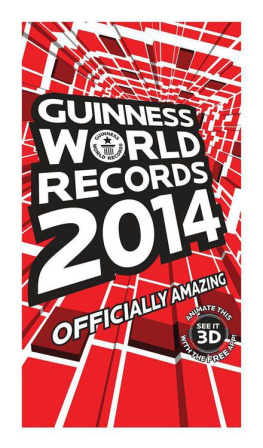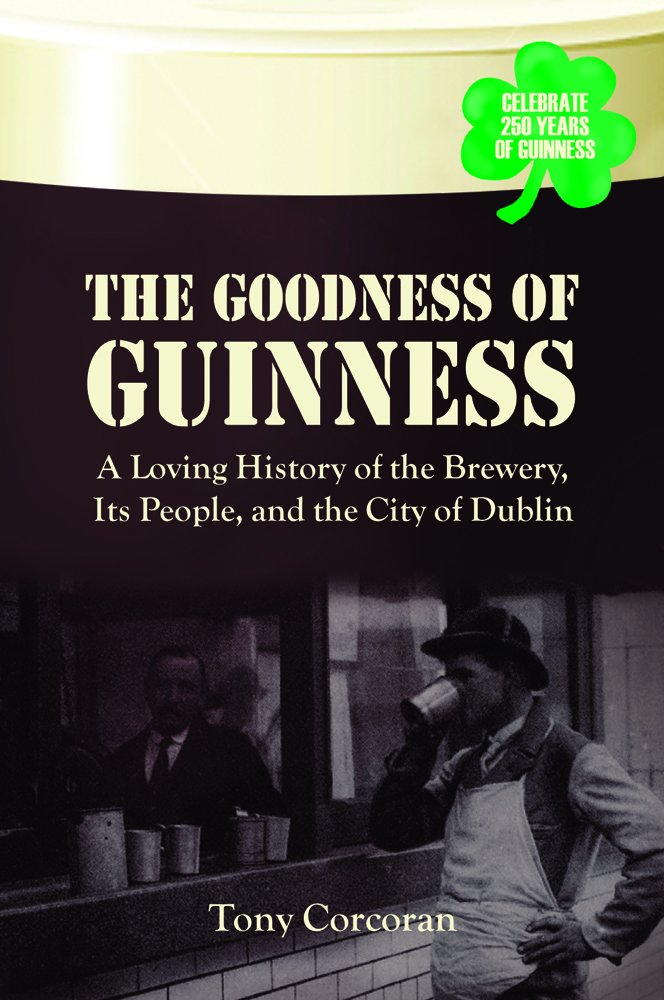ACKNOWLEDGMENTS
With a book like this, which has taken more than six years to prepare, it is difficult to recall the many people who were generous with their comments, information, and encouragement, without whose help the study would have been too daunting to complete.
Perhaps, though, on a subliminal level, the study began on the death of my father in 1958, when two people in particular were instrumental in ensuring that the Corcoran links with Guinness continued into another generation. These were Andrew Hughes-Onslow and Stan Corran, who encouraged my application to the company based on my Leaving Cert results. On my first day in the maelstrom of activity that was the Brewers Lab, one colleague, Tony Moran, took the time to look after me and take me to lunch. Also, within my first week there a friend of my fathers, Alex Byrne, took time to give me some fatherly advice. All of these people are now deceased and hopefully sat by my shoulder as I wrote this work.
One colleague who had a unique influence on my whole outlook on life was Des Carrick, whose father, like mine, was a Guinness Supervisor. Des introduced me to the world of art and creativity in all its forms, and it was he who encouraged my fledgling writing ambitions. I was also given the opportunity to write about social life in Guinness by the editors of the two house magazines, Mike Lawlor and Carol Scott. Throughout my career in the brewing departments, I met many people who became not only work colleagues but kindred spirits whose company made life more bearable than it otherwise would have been. Names that come to mind are Charlie McDermott, Peter Walsh, Ted Nulty, Tom (T.A.) Donohoe, Paddy Tucker, Willie Keogh, Willie Mullen, Anne Lewis, and John McMahon. Two of these, Peter Walsh and Willie Mullen, have researched and written much on Guinness history, and I would like to acknowledge how much their work has helped to inspire what I have written.
After retirement, I needed to talk with many people in order to support and build on my memories of Guinness life. I began in 1999 with a visit to Paddy Skelton at his home in Galway. Paddy was a lovely man, now happily tending to vintage cars in the forecourt of heaven. I continued with the previous archivist, Teresa ODonnell, and moved on to the current archivists, Eibhlin Roche and Clare Hackett. During my research, an engineering colleague, Michael Byrne, shared much of his own research on a parallel topic. Many thanks also to Christy Byrne for material given to me.
At the same time, I spoke with many people, including Paddy Scully, Mick Kiersey, Stan Barnes, Willie OConnor, John Fitzpatrick, Paddy Murphy, and Paddy Connaughton. My ventures into the entertainment world brought me into contact with Ada Kelly of the Guinness Choir and with Yvonne Robins, Audrey Nicholson, and Damien Flood of the Guinness Players. As the work progressed, I was helped by Nick and Catherine Pollard, who let me use their house in County Clare for correcting an early draft. Ita OGara, Donal Byrne, and John Mullins read and corrected drafts for me and, in particular, made constructive amendments to these drafts.
Throughout the writing period, I had many consultations, in person and by e-mail, with Rory Guinness, brother of the present Earl of Iveagh, who was extremely courteous, helpful, and encouraging. By far the most important influence for me, however, was Sir John Lumsden, Chief Medical Officer, who joined Guinness in 1894 and died in 1945. It was he who mirrored and enlarged the Guinness-family tradition of noblesse oblige and began the practical application of primary care to make employment in the Guinness Brewery a womb to tomb model unequalled anywhere else in the world.
Overall, though, everyone with whom I worked and associated has had an influence on this work. Even though all the names are not written here, I am grateful for their help. Finally, I dedicate this work to my family, past, present, and future. I thank the past generation for shaping my life and my present family for their encouragement. To the future generations, I offer this work as a record of past history and values.
Tony Corcoran
May 2005
CONCLUSION
LOOKING TO THE FUTURE
The Guinness Brewery at St. Jamess Gate has always had an eye to the future. Otherwise, it would not have succeeded for two and a half centuries. On the other hand, dealing with future events requires particular management skills, which, from time to time, were not easy to find at Guinness.
As a family business in the late eighteenth century and throughout the nineteenth century, the business of the Brewery was continually expanding, thanks to the management skills of the Guinness family. As we have seen, as an ethical Christian family, they saw their wealth from the business as a gift from God, and one which was to be shared with not only their workers but also the city of Dublin, and also with Ireland and England in general. As astute employers, they invested their family fortunes in people as well as in their own illustrious homes and estates.
Into the twentieth century, Guinness steered a wise course through the political unrest in Ireland, the two World Wars, and the emerging economic miracles in Ireland, which resulted from the initiatives of Sean Lemass and others in the late 1950s. As the British Empire declined, Guinness was one of the first large companies to build breweries in new independent countries, investing in the economies of Nigeria, Malaysia and Ghana, among others.
But as the company entered the 1970s, new forms of management were needed. In the operation of the Dublin brewery in particular, new forms of processing and cost control were urgently needed. In conjunction with new technology, new forms of personnel management and accounting were developed. Costs came under the spotlight and were viewed in relation to the future of the company. Comparisons were made with other less-costly breweries, and the view was taken that personnel costs needed to be reduced. Thus began the road to huge change.
In 1973, there was a major reduction in personnel at St. Jamess Gate, which saw several thousand workers given compulsory early retirement. This resulted in a huge loss of skills and expertise at the company. In other circumstances, the workers might have welcomed this move, but in a period in which the company was doing well, they were completely unprepared for it. Retirement without adequate preparation was difficult for many, and those who remained in the Brewery had to endure changes in work practices. Attitudes among the workers hardened, and the company experienced its first strike in its history in 1974.
Following the strike, a number of measures were put in place to create a spirit of involvement among the workers. A workers council-the Brewery Council-was put in place, with committees set up to consider topics ranging from communication to welfare and safety. Thus began many years of committee meetings, which produced various degrees of success. The chairmanship of the council was rotated by agreement with the various trade unions; the first job of the council was to persuade one union group, which had stayed outside the structure, to join up.
Through the 1980s, there were two other retirement plans, reducing personnel numbers further. Under these plans, voluntary retirement was offered to eligible workers. Other changes at the Brewery in the 1980s included the granting of company shares to workers as an annual bonus. Additional shares could also be purchased, within certain constraints. In the case of the profit-share allocations, shares had to be held for a minimum specified period before they could be sold.

